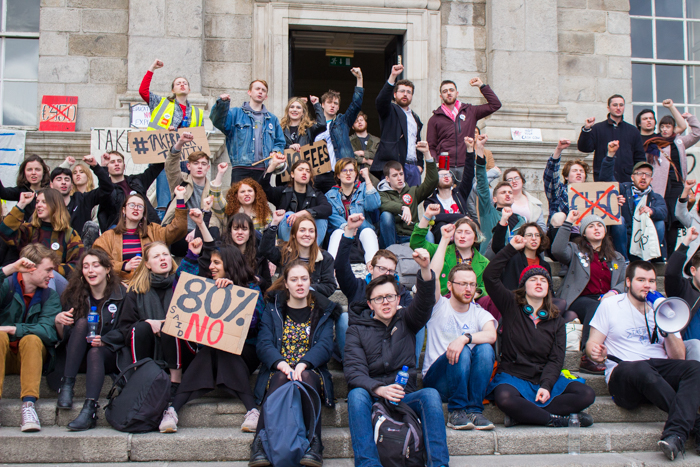On the night of the census in 2016 there were 429 homeless students in Ireland, making up over 8 per cent of the total homeless numbers. When the Government’s student accommodation strategy was launched in July 2017 there was an excess demand in purpose-built student accommodation (PBSA) of over 23,000 beds. This is expected to increase to almost 26,000 this year.
This means we are still 16,000 beds short, even if all PBSA that is projected is successfully completed. The Government has failed to meaningfully provide for these huge gaps, despite knowing of the shortages for years.
Casting an eye through Dublin inner city today, you would be forgiven for thinking that student accommodation is being built everywhere—surely to meet the need? However, there has been a 2 per cent increase in student numbers every year for the past decade, and this is expected to continue for the next decade. The Government has not built enough student accommodation to cover this increase, never mind addressing the shortage that now exists. This in effect is a housing system buckling under the pressure but also, in a very real way for students, becoming a significant barrier in access to education itself.
The context for students and their families is that €12,495 is the estimated cost of living per annum while studying in third level, including fees of €3,000, which are the second-highest fees in Europe—the highest in the EU after Brexit. Grant rates were cut massively in the 2012 budget, and they have not been restored, while accommodation costs have soared.
Much of the new student accommodation is being built as purpose-built student accommodation by Irish and global property investors, but the rents being charged are regularly unaffordable by the average student, with 90 per cent of it costing in excess of €800 per month. It is targeted predominantly at international fee-paying students, who are generally paying much higher fees, and thus attractive for underfunded higher education institutions.
The Government is pursuing an internalisation agenda to bring more international fee-paying students in to prop up a struggling education sector. According to the Dublin City Council report, 79 per cent of occupants in PBSA are international students.
Last summer we saw average increases of up to 19 per cent in one development (Galway, affecting NUIG students) and in another development 27 per cent (Dublin, affecting DCU students). At the beginning of this year again there was an increase of 10 per cent in UCC and 20 per cent in another complex in Galway, presumably as they prepared for legislation that students were told they would be getting last year. The story is not getting better for students.
Up until this month students in PBSA did not have the same rights as those who have contracts in other rented accommodation, as they were licensees, with no legislative protection. The new Residential Tenancies (Amendment) Act, which came into effect this summer, closed some of this “legal limbo” for students, but far too late. College-owned student accommodation increased their prices once they got wind of this legislation coming in—which parties promised a year and a half ago—and privately owned PBSA is coming onto the market at €1,200+ per month, something the Government has not even begun looking at a solution for. But with only 19 per cent of PBSA being publicly owned, they don’t have much pull against the private developers’ builds.
These are labelled “luxury student accommodation blocks,” because government parties and others are looking for a group to be scapegoated in this crisis. The demand by students was never for rental apartments in inner-city areas that would push out local communities. Some of these rogue developers moved students into building sites last summer, while charging them €230+ per week for the pleasure. The “Tramshed and Woodworks” chose to rebrand at the start of the year to “Point Campus,” to try to give themselves a fresh new look, away from their previous criticisms.
On top of all of this, regulation on PBSA is different from other builds. Section 50 on Guidelines for PBSA states that the build has to remain student-specific only for ten years—this is while they benefit from less regulation in other areas, smaller rooms, no Part 5 social housing requirements, and fast-track planning, ensuring that private developers can make the most bang for their buck, cramming students with extraordinarily high rents while the Government can tick off a few more beds from their strategy, beds that will only remain for students for ten years.
So where do we go next? There are murmurings of direct action, rent strikes, and mass mobilisations. We need to create a movement, and we need to take action, now.






